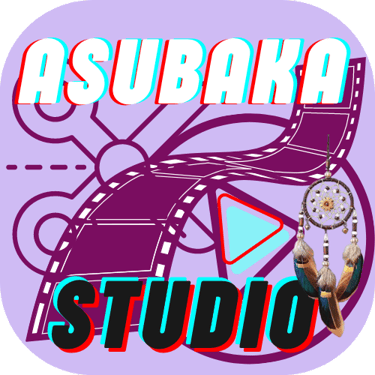
Mastering the Art of Storytelling: From Concept to Application
What is storytelling, what is its origin, its applications, why is it important in video marketing and what techniques to use? We answer all this in this article
PROCESSUS DE CRÉATION


What is Storytelling?
Much more than just narration, storytelling combines structured narrative elements to create an immersive experience. Whether epic tales, personal anecdotes or myths, storytelling transcends cultures and eras to create a deep connection between the storyteller and their audience.
Storytelling could be defined as the act of telling a story in an engaging and memorable way, with the aim of conveying information, an idea, or an emotion or all three at once. It goes beyond the simple presentation of facts (as a lecture would) by creating a narrative that captures attention and remains anchored in the memory.
Storytelling is crucial in video marketing, regardless of the format of the videos; short or long. Indeed, it is a communication technique that uses narration to convey a message, arouse emotions and create a connection with the audience.
> Given that our memory works much better when it is stimulated by the five senses (which are, I remind you, sight, hearing, touch, smell and taste). The more we use them at once, the better we retain the information.
Also, if we are interested in the subject presented, we will be more focused and attentive, which further facilitates memorization. But the ultimate strategy is emotions! When an emotion is associated with an event, an idea or information, and a fortiori an intense emotion, our brain mobilizes the big means to remember it.
Why?
Basically, it is for a question of survival. Have you ever noticed that we remember bad memories better than good ones? Those for which we had very strong emotions, such as fear or anger?
Well, it is precisely in the event of our life being in danger, having retained and learned from a perilous experience in the past will allow us to avoid repeating the same mistake or to adapt our behavior to survive this threat.
> I am giving you an extreme example here of course, but it is about understanding how our memory works to better exploit it.
You will have certainly understood, to attract, captivate, engage and even retain an audience, stirring the public is the best strategy. And what could be better than an audiovisual medium such as a video, which uses sight and hearing, all enhanced by excellent storytelling!
> This is why taking the time to think about a script or scenario that will put your initial idea into images and sound is so essential. Many people do not do it or do not do it for long enough.
Having an idea is good, having a good idea is better, but having an idea that has been developed and structured using one or more storytelling techniques is the ideal to aim for.
In marketing video as in cinema, telling a captivating story that will make the viewer want to discover the end is the real secret to success.
> The longer people watch, the more information can be disseminated, I would even say infused into their brains. You will then have more time to make them commercial proposals and persuade them that you have the solution for them.
Storytelling Origins and Applications
But let’s go back a bit. Who invented this art of storytelling and when did it appear?
In reality, giving its origin is difficult. And attributing the invention of storytelling to a single person or era is even more difficult, because:
It is an ancient tradition. Storytelling has existed since humanity developed language.
For thousands of years, stories have been the most effective way to transmit knowledge, values, and traditions. From prehistoric cave murals to the epic tales of ancient civilizations, storytelling has always been an integral part of the human experience. So its evolution has continued over time, adapting to different cultures and technologies throughout the centuries.
However, we can find a kind of “modern normalization” of the term today.
Especially in the 1990s, the term "storytelling" began to be used more frequently in the business and marketing world, thanks in particular to authors like Seth Godin.
In the modern world, storytelling has regained its nobility thanks to digital media. Companies use this technique to humanize their brand, build customer loyalty and stand out in a saturated market. Today, storytelling applies to viral advertising videos as well as inspiring podcasts, social media posts and blogs.
This brings us to list the areas of application of storytelling which are numerous and which we sometimes do not suspect. Here are the most common ones:
Traditional arts:
Literature
Theater
Cinema
Comic strips
Marketing and advertising:
Branding
Advertising campaigns
Education:
Teaching
Vocational training
Politics:
Speeches
Election campaigns
Journalism:
Reporting
Documentaries
Management:
Leadership
Project management
Digital technologies:
Video games
Virtual reality
Social media
Psychology and therapy:
Narrative therapy
Science:
Popular science
Advanced Storytelling Techniques in Marketing
Let’s take the example of a famous American author like Donald Miller, who successfully applied storytelling techniques to marketing.
According to Miller, every good story must have a hero, a goal, obstacles, and a transformation. In other words, your customer is the hero, your product is the tool that helps them overcome obstacles and achieve their goal, and your brand is the guide that accompanies them throughout their journey.
To apply these techniques, it is essential to know your audience well and structure your message according to their needs and desires. Use real anecdotes, testimonials, and real-life cases to make your narrative credible and relatable.
Let’s now see some advanced techniques from the creator of relationship marketing: Seth Godin. He uses several effective storytelling techniques in his marketing and communication approach.
Here are some of his main techniques, with examples, and how they can be applied to writing movie scripts:
Technique 1. Simplicity and mental images through immediate metaphorical visualization:
> Godin Technique: He uses simple language and allegories to explain complex concepts.
- Example: In his book "Purple Cow", he compares remarkable companies to a purple cow in a field of ordinary cows.
- Application to cinema: Using clear dialogue and visual metaphors to explain complex concepts in the script.
- Cinema example: In "Inception", the architect explains the concept of shared dream by folding a city on itself.
Or in The Matrix" - The red/blue pill simply symbolizes the choice between truth and ignorance.
- Advertisement: Apple's "Get a Mac" campaign - personifies Mac and PC to simply illustrate their differences.
Technique 2. Focus on emotion:
> Godin's technique: He focuses on the emotions his message provokes rather than the bare facts.
- Example: In "Tribes", he talks about passion and belonging rather than simply describing organizational structures.
- Application to film: Creating characters with strong emotional arcs.
- Film example: In "Manchester by the Sea", the protagonist struggles with guilt and grief throughout the film.
Or in Pixar's "Up" - The silent opening sequence tells the story of a lifetime of love and loss.
- Advertisement: Always' "Like a Girl" - challenges gender stereotypes by showing the emotional impact on young people girls.
Technique 3. Using Personal Anecdotes:
> Godin Technique: He often shares personal stories to illustrate his points.
- Example: In his blogs, he frequently recounts interactions with customers or personal experiences.
- Application to film: Using flashbacks or side stories to deepen the characters.
- Film example: In "Forrest Gump", the protagonist's personal anecdotes structure the entire story.
Or in "The Grand Budapest Hotel" - The main story is told as a personal memory of the hotel owner.
- Advertising: Dove's "Real Beauty" campaign - uses personal stories of real women to promote positive body image.
Technique 4. Creating Tension and Resolution:
> Godin Technique: He often poses a problem or a provocative question before offering a solution.
- Example: In "Linchpin", he begins by describing the challenges of the modern workplace before proposing how to become "indispensable".
- Application to film: Creating increasing obstacles for the protagonist before the final resolution.
- Film example: In "The Martian", the main character faces increasing challenges before he can return to Earth.
Or in "Whiplash" - Tension builds between the student and the professor until the cathartic final performance.
- Advertisement: "The Man Your Man Could Smell Like" by Old Spice - creates humorous tension through absurd scenes that resolve in the final tagline.
Technique 5. The use of repetition:
> Godin technique: He often repeats key phrases or concepts to anchor them in the reader's mind.
- Example: His concept of "Purple Cow" is repeated and re-explained in many ways in his eponymous book.
- Application to film: Using recurring phrases or visual motifs to reinforce the themes of the film.
- Movie example: In "Inception", the spinning top is a recurring visual motif symbolizing reality vs. dreams.
Or in "The Shining" - The phrase "Redrum" is repeated, creating increasing tension.
- Advertisement: "Dumb Ways to Die" by Metro Trains Melbourne.
- Advertisement: Metro Trains Melbourne's "Dumb Ways to Die" - uses a repetitive song to anchor its safety message.
Technique 6. Non-linear storytelling:
> Godin's technique: He doesn't hesitate to jump from one idea to another, creating unexpected connections.
- Example: In his blog posts, he often links seemingly unrelated concepts to illustrate a larger point.
- Application to film: Using a non-linear narrative structure to create interest.
- Film example: Tarantino's "Pulp Fiction" uses non-linear storytelling to interweave multiple stories.
Film: "Memento" - The story is told backwards, reflecting the protagonist's condition.
- Advertisement: Philips' "Carousel" - a crime scene frozen in time that the camera explores in a non-linear way.
Technique 7. The Call to Action:
> Godin Technique: He often ends his stories with a clear call to action.
- Example: At the end of "Tribes", he encourages the reader to become a leader and form their own "tribe".
- Application to Film: Leaving the audience with a strong thought or emotion at the end of the film.
- Film Example: The open ending of "Inception" leaves the audience thinking about the nature of reality.
Or in "The Truman Show" - The ending prompts the viewer to reflect on reality and the media.
- Advertisement: Coca-Cola's "Share a Coke" - directly encourages consumers to share personalized bottles with their friends.
These storytelling techniques by Seth Godin are indeed applicable to writing film scripts, as they focus on emotional engagement, clarity of message, and creating a memorable experience for the audience, all of which are crucial elements in film storytelling.
In conclusion, mastering the art of storytelling can transform your communication and allow you to captivate and retain your audience in a significant way. So why not give it a try and integrate storytelling into your next marketing strategy?
Why Storytelling is important?
The power of storytelling lies in its ability to simplify complex information and make messages memorable. In the context of videos, for example, short, punchy narratives work well for commercials and teasers, capturing attention in seconds.
In contrast, long-form formats allow for deeper, more emotional narratives, ideal for documentaries and web series.
Understanding the format and function of each content type is essential to choosing the right narrative approach. A 30-second commercial should be concise and impactful, while a 10-minute video should develop its characters and plots to maintain engagement.
Why storytelling is important in a short video
1. A short video should capture attention quickly:
- The notion of immediate impact is essential. Short videos, like Instagram Reels or YouTube Shorts, should capture the viewer's attention in a few seconds. Good storytelling can create a strong initial hook that intrigues and engages the viewer from the start.
- With limited time, good storytelling helps convey a clear and concise message, emphasizing the most important points and eliminating the superfluous.
2. In the short format, emotion and connection are also keys:
- Even in a short format, a well-constructed story can arouse emotions, whether joy, humor, surprise or empathy. This makes the video memorable and strengthens its impact.
- The connection is made through the personalization of the message. Storytelling provides a personal or narrative context, even brief, that helps viewers feel connected by identifying with the message, the brand or the influencer.
3. The importance of engagement and sharing of short formats for virality:
- The challenge here is to encourage sharing. But a good story is more likely to be shared because viewers are more likely to share a video that touched, amused or inspired them.
- Not to mention interactions with the audience. Videos that tell a story that touches them or makes them laugh will naturally encourage viewers to interact, whether through comments, likes or other forms of participation.
4. Finally, the short format forces an effective transmission of the message.
- Since we are short on time, we will have to move towards simplifying complex ideas. Storytelling helps here to break down complex ideas into simple, accessible and engaging stories, imposed by this format.
Why storytelling is important in a long video
1. In a longer format, we have time to develop the narrative structure and thus enrich the story to capture and keep attention.
- This is the whole strength of storytelling techniques that are essential to maintain the viewer's interest throughout the story. A good narrative structure, with arcs of tension and resolution, which create a sort of hypnotic ripple will help keep the viewers engaged.
- With the long format, you have all the time you need to dig into your characters. There is a storytelling technique dedicated to them that we will see together in the next video devoted to this subject. In the United States, screenwriters often work in groups to allow them to dissect and delve deeper into the development of characters and more complex plots. This depth of a persona, in other words a character or "character", offers the audience the opportunity to become attached to them and to invest emotionally in their journey. Here too, identification, the famous memory neurons, comes into play.
2. Speaking of depth, we inevitably fall into more complexity and not only with regard to the characters.
- Exploring themes is a very powerful narrative vehicle. However, long videos allow for a more in-depth exploration of any theme and leave the possibility of conveying more messages with more intensity, but also insistence through repetition. Which is by the way another excellent means of memorization. Storytelling therefore provides the framework here to weave all these elements together in a meaningful way.
- As many nuances and subtleties in the information you wish to convey and thus enrich the narrative experience for everyone.
3. Here too, emotional engagement will be a key strategy, especially since we have more time to pull on the sentimental strings in a long format.
- We can take the time to create a truly immersive experience. A good story can immerse the viewer in a fantastic universe or a fascinating experience, which calls for emotional engagement and message retention.
- This then provokes in the audience, what is called, "lasting resonance". Well-told stories have a lasting impact, leaving a lingering impression that provokes reflection and stimulates memory. Like successive echoes spreading in the space of one's memory and which resonate with old memories. Here again we touch these intimate chords that mark the audience.
4. Finally, there are the notions of coherence and structure that should never be neglected.
- It is essential to organize your story and the information that you want to convey to your audience. Because our brain, again, has a vital need for coherence in order to be able to understand the world around it, but also to maintain a behavioral logic.
We must always ensure that the viewer easily follows the narrative thread without getting lost in superfluous details that we will therefore absolutely avoid adding. Hence the usefulness of calling on a test audience and collecting and analyzing opinions and feedback, and not hesitating to iterate tests as much as necessary. No script in the world has only one version! The average generally exceeds fifty and much more!
Whether the video is short or long, good storytelling is essential to captivate, inform and inspire the viewer.
It provides a narrative structure that not only attracts attention, but also facilitates understanding and creates a lasting emotional connection.
By integrating effective storytelling, content creators can maximize the impact of their message and strengthen the engagement of their audience.





